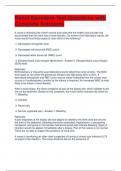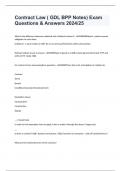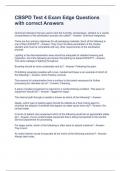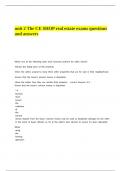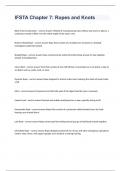Exam (elaborations)
Renal Saunders Test Questions with Complete Solutions
- Course
- Institution
Renal Saunders Test Questions with Complete Solutions A nurse is reviewing the client's record and notes that the health care provider has documented that the client has a renal disorder. On review of the laboratory results, the nurse would most likely expect to note which of the following? 1...
[Show more]
